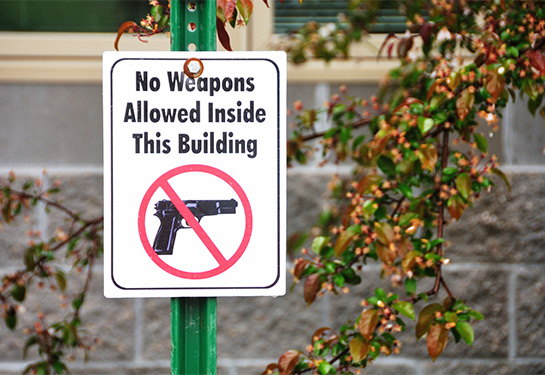What are ‘red flag’ laws and how can they prevent gun violence?
How ordinary people can use gun violence restraining orders if someone is at risk of harming themselves and others
California’s red flag law, which allows people to obtain gun violence restraining orders (GVROs), went into effect seven years ago.
Since then, GVROs have been credited with deterring at least 58 potential mass shootings and other types of gun violence in California, including suicides. Currently, 19 states and the District of Columbia have red flag laws, also known as extreme risk protection order laws.
But what are they, and how do they work?
“Red flag laws are a tool law enforcement and others can use when somebody is clearly at high risk of doing something with a firearm, but they can't be arrested because no crime has been committed and they don't appear to need a mental health hold or qualify for one,” Amy Barnhorst said.
Barnhorst is a psychiatrist at UC Davis Health and an expert on violence prevention. She is vice chair of Community Mental Health and the director of the BulletPoints Project, which teaches clinicians how to prevent firearm violence.
She remembers the days before California’s red flag law. “When somebody was making threats about hurting people at their school or even threats of suicide, there wasn't much that could be done,” Barnhorst said. “Red flag laws have changed that. With the law, there is something that can be done about people who are making threats or have concerning behaviors.”
Obtaining a gun violence restraining order
Gun-related deaths remain high in the U.S. The Gun Violence Archive, which tracks firearm violence in the U.S., reports 648 mass shootings, 20,176 homicides, and 24,090 suicides in 2022.
Research has found that in about 80% of cases, people who commit mass shootings or suicide make their intentions known in advance to family members or friends or via social media.
“It's really important that if you are concerned about a student in your school, or you’re a concerned parent, teacher, employer or somebody who's worried about someone, know there is a way to intervene and reduce the risk. But you need to tell someone, such as law enforcement, who can act,” Barnhorst said.
“If you're in California, and there is someone you're concerned about who may be at risk of firearm injury, and they have access to guns, you can go to the Speak for Safety website. It can help walk you through how to pursue a gun violence restraining order,” Barnhorst said.
The website has different tabs you can select for your relationship to the person at risk — such as employer or co-worker, family or household member, law enforcement or teacher or school employee.
The California Courts website also has information in English and Spanish about how to obtain a GVRO.
“In many cases, law enforcement can get an emergency GVRO on the scene, and they can remove any firearms from the person at risk at that time,” Barnhorst said. “If the judge determines that the person is at risk, the judge can continue the prohibition. The guns will continue to be kept away for the duration of the order, which can be renewed after a year or longer in some cases.”
Barnhorst explains there is due process during all stages of the legal procedures. “People who have had their firearms removed can appear in court to give their side. If the judge determines they are not a danger, the prohibition can be lifted, and the firearms returned,” Barnhorst said. She notes GVROs are civil court actions. They don't involve the criminal courts, and they don't become part of a person's criminal record.
It's really important that if you are concerned about a student in your school, or you’re a concerned parent, teacher, employer or somebody who's worried about someone, know there is a way to intervene and reduce the risk.”—Amy Barnhorst
Most people don’t know about GVROs
Despite the potential to reduce mass shootings and suicides, the use of GVROs in California has been limited.
One of the biggest barriers appears to be the lack of awareness about them.
A recent survey found that nearly two-thirds of the respondents did not know about GVROs, although 70% said they would consider using one in a high-risk situation.
“The GVRO law empowers people to play a role in preventing firearm violence among friends, family members, co-workers and classmates by providing a tool to remove firearms from crisis situations,” said Veronica Pear, an assistant professor at the Violence Prevention Research Program at UC Davis. Pear studies violence prevention and has published numerous studies about the efficacy of red flag laws.
“However, the law can only save lives if it is used, and for that reason, education is key,” Pear said.
For more information about how to obtain a gun violence restraining order in California, visit the Speak for Safety website or the California Courts webpage.
Resources
The UC Davis Violence Prevention Research Program (VPRP) is a multi-disciplinary program of research and policy development focused on the causes, consequences and prevention of violence. Studies assess firearm violence, the social conditions that underlie violence, and the connections between violence, substance abuse and mental illness. VPRP is home to the University of California Firearm Violence Research Center, which launched in 2017 with a $5 million appropriation from the state of California to conduct leading-edge research on firearm violence and its prevention. For more information, visit health.ucdavis.edu/vprp/.




